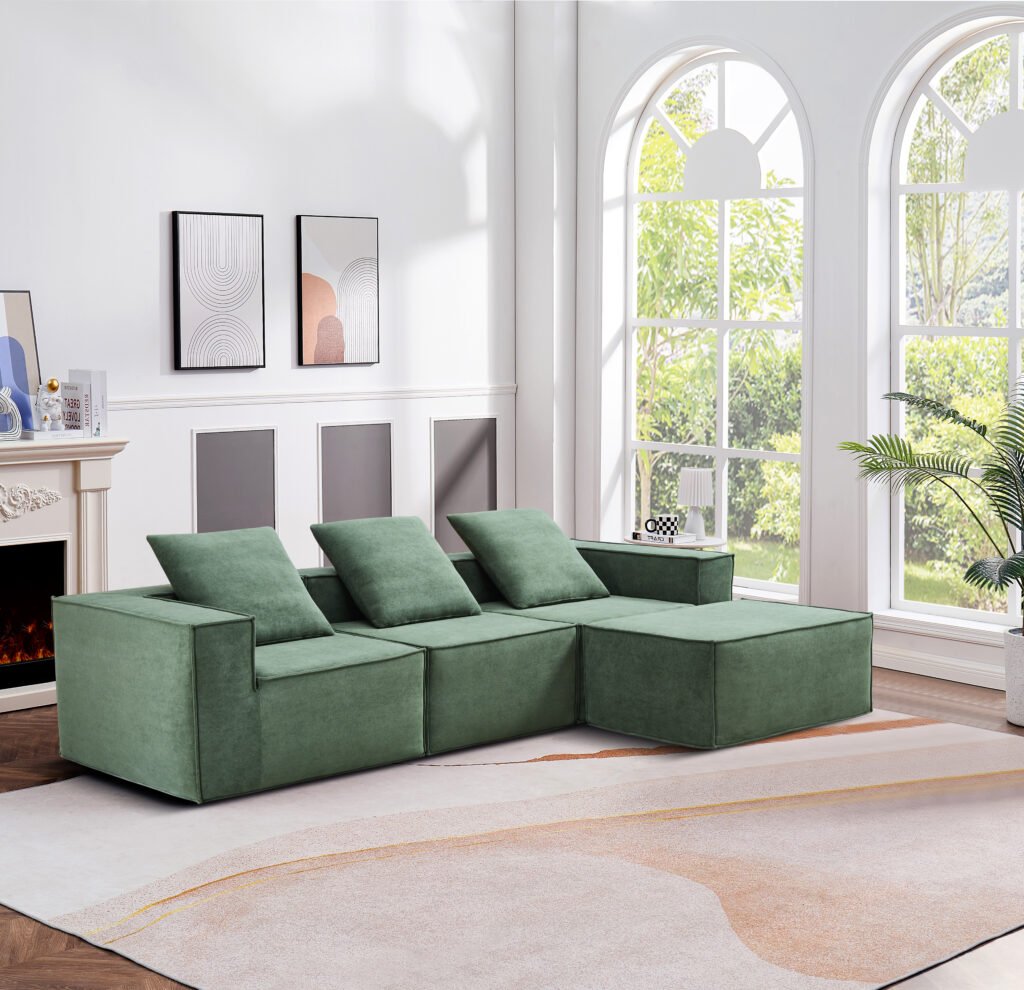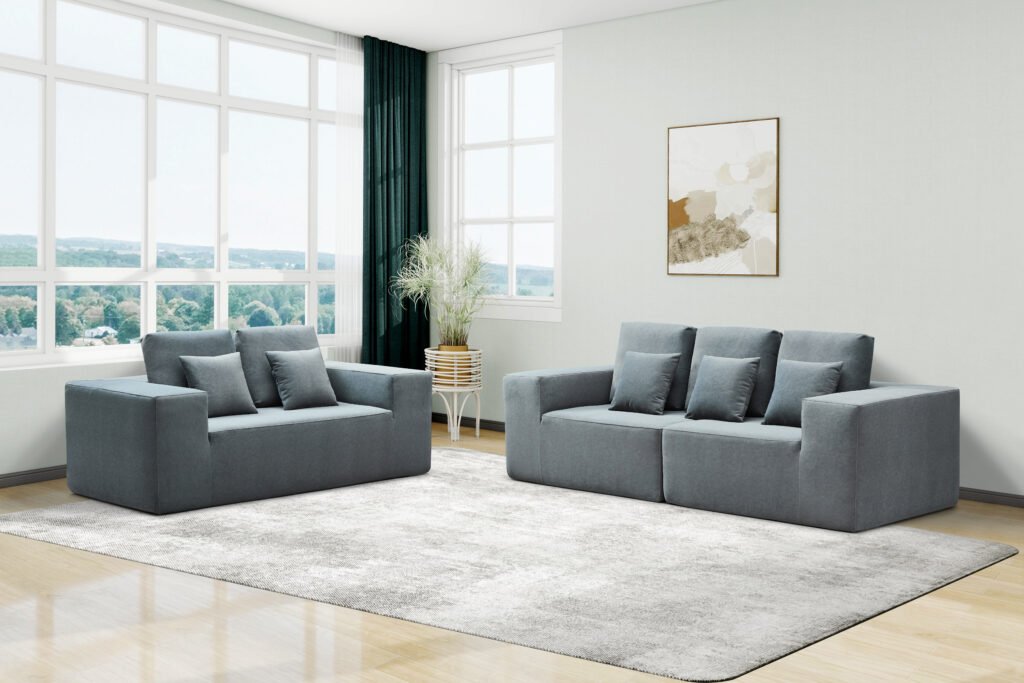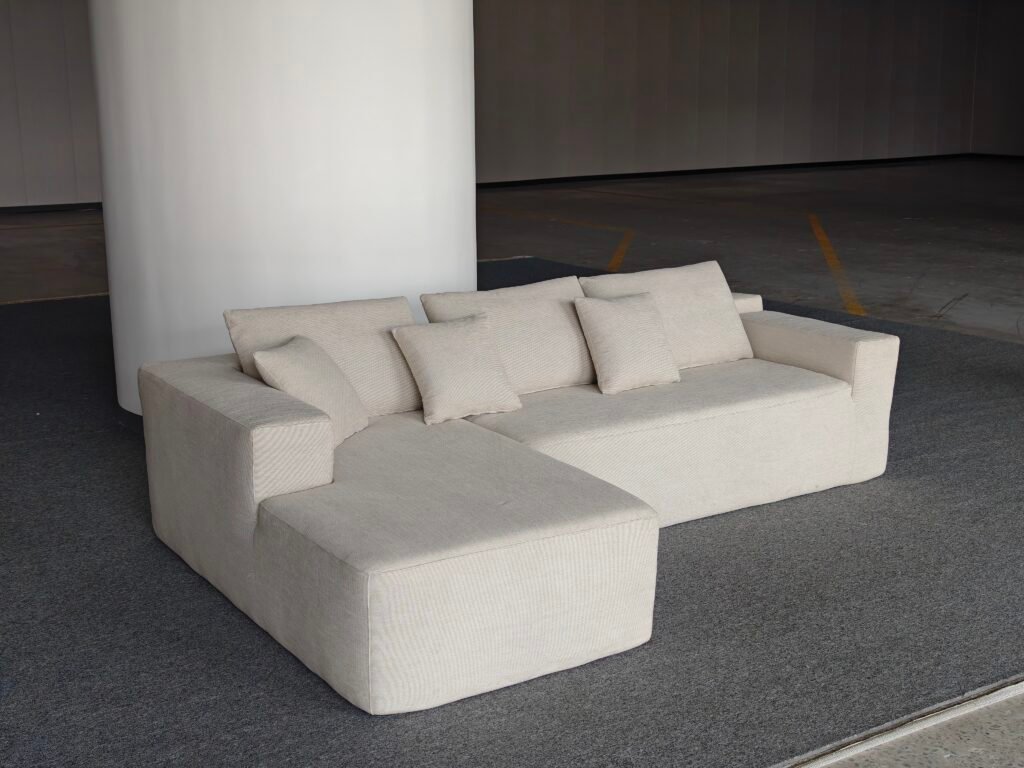
Introduction
For B2B stakeholders such as manufacturers, wholesalers, distributors, and retailers, understanding the thickness and size specifications of compress sofas is crucial to optimizing packaging efficiency, reducing logistics costs, and enhancing customer satisfaction. Compress sofas, designed with advanced vacuum compression technology, revolutionize furniture shipping by significantly reducing volume without compromising comfort or durability. This comprehensive guide explores the critical dimensions—thickness and size—of compress sofas and offers practical insights for B2B professionals to streamline supply chains and improve operational efficiency in 2025 and beyond.
The Importance of Thickness in Compress Sofa Packaging
Thickness plays a vital role in both the comfort of the sofa and the packaging process. Compress sofas typically use high-density foam cushions that can be compressed to a fraction of their original thickness during shipping. Industry standards suggest a minimum foam thickness of 1.5 inches for edge protection in packaging, with foam densities adjusted based on the sofa’s weight to maintain structural integrity during transit. For example:
- Sofas under 75 lbs require at least 1.5 inches of foam with a density of 10 kg/m³ on edges and 16 kg/m³ on corners.
- Heavier sofas (over 150 lbs) need foam with densities up to 20 kg/m³ to prevent damage.
Proper thickness and density selection ensure the sofa retains its shape and comfort after decompression, which is a key selling point for B2B buyers focused on product quality and customer satisfaction.


Size Variations and Their Packaging Implications
Compress sofas come in various sizes—from compact loveseats to expansive modular sectionals. The size directly influences packaging dimensions, compression ratios, and shipping strategies. Typical size categories include:
- Compact Loveseat: Approximately 48–72 inches in length, ideal for small apartments and offices.
- Standard 3-Seater: Ranges from 72–96 inches, the most common size for residential and commercial use.
- Modular Sectionals: Can exceed 156 inches, often shipped in multiple compressed modules for flexibility.
- Oversized Sofas: Larger than 96 inches, requiring reinforced packaging and specialized handling.
For B2B logistics, understanding these size categories helps optimize container loading, pallet stacking, and warehouse storage, reducing costs and improving turnaround times.


Packaging Guidelines for Optimal Protection
Leading furniture retailers and manufacturers follow stringent packaging protocols to protect compress sofas during transit:
- Use double-wall corrugated cartons sized precisely to the compressed sofa dimensions.
- Wrap sofa legs separately with non-woven materials or PE foam sheeting (minimum thickness 1.5mm) to prevent abrasion.
- Employ foam blocks, corrugated wedges, or honeycomb structures to cushion edges and corners, covering at least 50% of any edge longer than 12 inches.
- Secure cushions and pillows with non-woven wraps and ensure they are immobilized within the carton.
- Avoid loose fill materials like packing peanuts; instead, use stable foam inserts to prevent movement.
These measures are crucial for B2B clients to minimize damage rates, reduce return costs, and maintain brand reputation.
Compression Ratios and Volume Reduction
Vacuum compression technology can reduce a sofa’s volume by up to 85-90%, dramatically lowering shipping and storage costs. For example, a standard 3-seater sofa that normally occupies about 3 cubic meters can be compressed into a box less than 0.5 cubic meters. This efficiency enables:
- Doubling or tripling the number of units per shipping container.
- Lower freight charges and carbon emissions.
- Easier handling and faster delivery times.
B2B buyers benefit from these efficiencies through improved margins and enhanced supply chain sustainability.


Customization and Modular Flexibility
Many compress sofas feature modular designs, allowing different sections to be compressed and shipped separately. This modularity not only aids in packaging efficiency but also provides B2B clients with flexible furniture solutions adaptable to various space requirements. Custom sizing and thickness adjustments can be made to meet specific project needs, from compact urban dwellings to luxury commercial spaces.
Case Study: MAXYOYO L-Shape Modular Couch
The MAXYOYO L-Shape Modular Couch exemplifies how thickness and size optimization can enhance packaging efficiency and customer experience. Its high-density foam cushions compress tightly without damage, and the modular sections ship in compact boxes, making transport and assembly straightforward. This product’s eco-friendly packaging and adaptable sizing cater perfectly to urban renters, e-commerce retailers, and commercial clients seeking sustainable, space-saving furniture.
Conclusion
For B2B furniture professionals, mastering compress sofa thickness and size specifications is fundamental to optimizing packaging, reducing logistics costs, and delivering superior products. By adhering to industry packaging standards, leveraging vacuum compression technology, and offering modular flexibility, businesses can achieve significant operational efficiencies and meet the evolving demands of the 2025 market. Understanding these technical details empowers manufacturers, wholesalers, and distributors to enhance their competitive edge and customer satisfaction in the compress sofa segment.